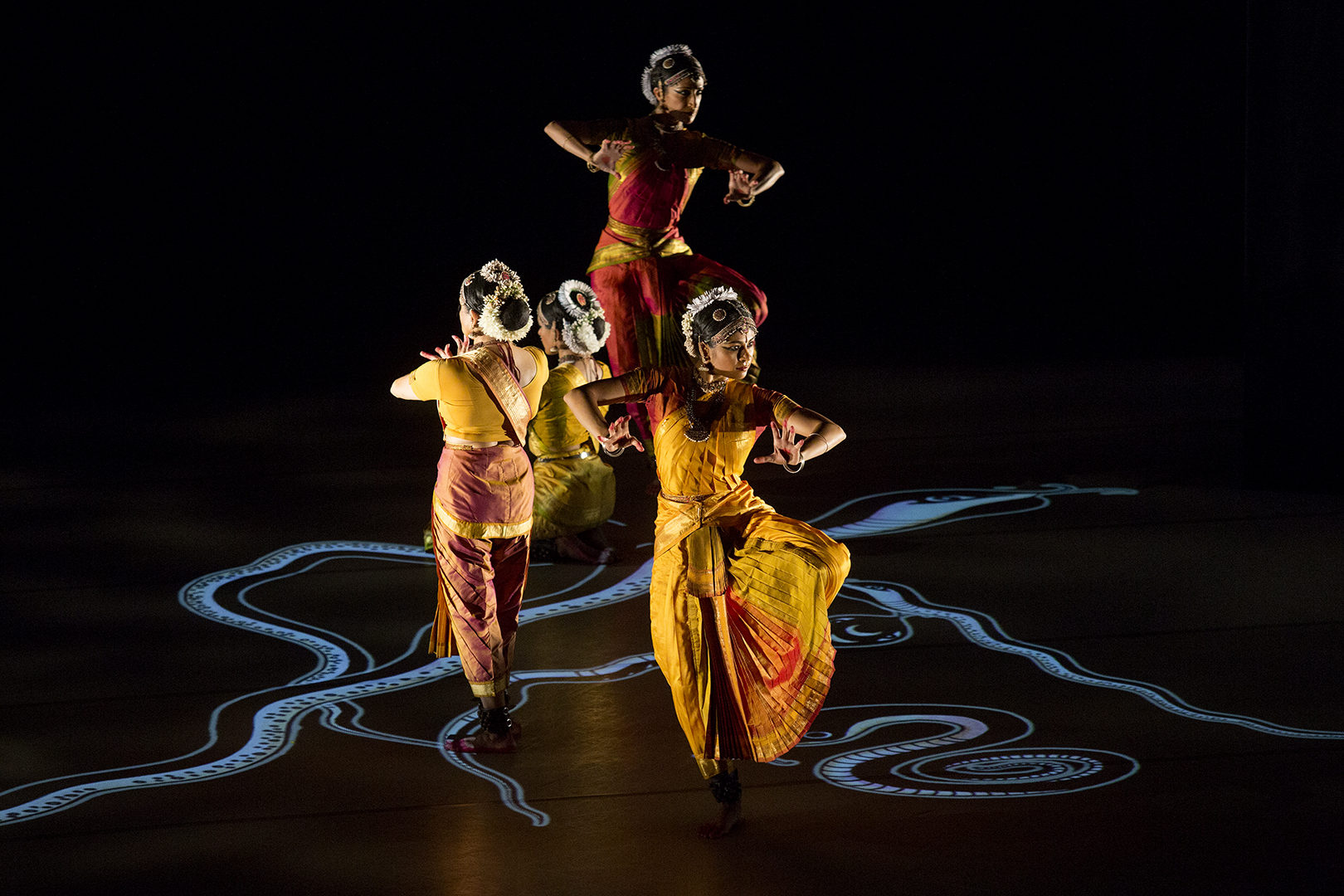I’ve seen a fair number of bharatanatyam performances over my time at college, but Written in Water was different. Firstly, it’s the only one that has used a live accompaniment. The performance was already astounding in itself, but the music added another layer of depth to it, and made it even more so. The music was written by Prema Ramamurthy and Amir ElSaffar, the latter of which performed himself through UMS only two days before Ragamala’s show. ElSaffar makes his music by blending styles, primarily Sufi music and jazz, and that emphasis on fusion really came through at the show, where traditional bharatanatyam accompaniment was blended with Sufi and jazz styles. An acquaintance of mine that also went to the concert mentioned that the jazz added a familiar element, something that she, as someone unfamiliar with bharatanatyam or Sufi music, could relate to. ElSaffar’s vocals added a sense of melancholy to the performance, which fit really well with the emotions that the dancers were portraying at the time.
The dancers themselves were beautiful. Bharatanatyam is most often a solo dance, but there were five dancers who performed in the show. I couldn’t believe how good their synchrony was. Every time they performed a movement together, not only was the timing perfect, but the details—like the angles of their hands—were perfect too. They all exhibited such grace on the stage. There are some movements in bharatanatyam that involve balancing on one foot, and everyone who performed such a movement during the show did so effortlessly. Watching it, it seemed as though they could easily go on standing like that for an eternity. That bespeaks a strength that only comes after years of devotion to that art. Emotion is also integral to the dance. Written in Water focuses on emotions, on human life, states of being, and the quest for the divine. The dancers were all superb at conveying the emotions present in their choreography not just through their movements but also with their facial expressions. Their costumes also were fairly simple compared to those in other performances I’ve seen in the past, which drew even more attention to their movements and their expressions.

The last piece of this performance was the visual art they used as a backdrop. The Chennai-based visual artist Keshav created each piece of art they used, and his style melded perfectly with the other aspects of the performance. The paintings, which helped to further elucidate the concepts the dancers were illustrating, were absolutely beautiful. One of the paintings, possibly the most important to the piece, was of a Snakes and Ladders gameboard, which was one of the three concepts through which the show explored the previously mentioned themes. They danced right on top of the gameboard, showing triumph as they ascended the board or sinuous motions as they descended a snake (this was helpful for me, since from where I was sitting I couldn’t see the floor of the stage). I love the idea of interacting with the floor: I’ve always seen the ground as an essential element in bharatanatyam, because the dancers mark time by stamping the ground, and the gungurus they wear on their ankles accent those footfalls. So to see them use the floor as more than a surface was really wonderful. It is also interesting that even when they were not exploring the gameboard, they often used a projection of one of the other paintings that was part of the performance. I talked to Aparna Ramaswamy after the performance, and she mentioned how carefully they choreographed around the artwork, so that they would use it to its fullest extent but simultaneously refrain from stepping on important symbols or otherwise disrespecting the artwork and traditions it represented. It was amazing to see that level of attention to detail in this show, and that element was consistent in every aspect of this masterful performance.
Written in Water is the only bharatanatyam performance UMS has put on in the four years I’ve been here. I hope such a breathtakingly exquisite show as this encourages them to invite more bharatanatyam performers to Ann Arbor.




